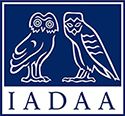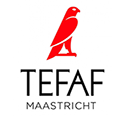Description
The Chorrera culture is survived by its wealth of material culture and well-polished ceramics. This culture’s impressive geographic range extended from the northern Esmeralda province to the heart of Chorrera culture in the Babahayo River Valley. Chorrera culture is renowned for having continued and improved upon the work of more than two thousand years of ceramics tradition passed down to them by the Machalilla culture.
The shape of the plate itself is a distinct, symmetrical oval with rounded sides and a flattened bottom. A sharp edge delineates the plate itself from the decorative rim that angles slightly upward. Although the inner shape of the plate is completely round, the border surrounding it is more rectangular in nature with embellished edges that curve and dip in waves. Towards the center left of the longer sides wave-like breaks in the smooth pattern end in three points on both the upper and lower edges. The bottom right hand corner bears similar two-pronged waves that have been since worn away from the upper right hand corner.
On the left side of the frame a monkey crouches, large head looking curiously out at the viewer with enormous eyes. The monkey’s arms are gathered beneath its chest and worked in relief in the same manner as its legs and tail. The tail curls in a mischievous S over its back above a bottom that has been positioned towards the viewer. The artist has seen fit to grace its artistic anatomy with an anal hole that goes through the rim. Opposite the monkey, on the right hand side of the plate, floats a carefree jellyfish also worked in relief, with three white lines showing the flow of its movement.
The whole piece is burnished a beautiful red and incised with thin lines that reveal the color of the white clay used to sculpt the plate. Lines trace exterior border, and grace the interior of the plate where swaying curves make a fascinating motif. These engraved lines add a touch of elegance to the plate, bringing together the elements of the plate’s design.
The Metropolitan Museum of Art owns a similar plate from the Chorrera culture, Accession no. 1991.436.2, albeit without the superior quality possessed by the Merrin Gallery plate.
MM




